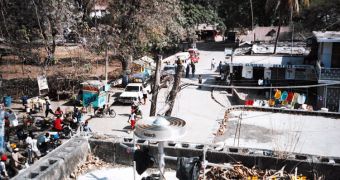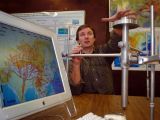The January 12, 7.0-magnitude earthquake that shook the very foundation of Haiti, and left the country in ruins, did not come all of a sudden. The energy that was released then, and in following aftershocks, was accumulated in the fault lines between the Caribbean and North American tectonic plates for a long time, and now a team of geologists is departing this week on location, to analyze precisely how that happened. The new work is funded by the US National Science Foundation (NSF).
One of the major goals of the new investigation is also to assess whether the fault lines near the Haitian capital city of Port-au-Prince have become stable, and also if there is a risk of a large tremor occurring in the vicinity of the island, or even below it. Purdue University geophysicist Eric Calais, the leader of the team that leaves for Haiti this week, says that it's absolutely urgent for researchers to get on site as soon as possible, before crucial seismic data are lost for good. He also adds that the potential for significant aftershocks is the largest in the first few weeks following a major earthquake.
“The big question is instead of small aftershocks, could there be a bigger earthquake coming. There are many historical examples of an initial earthquake triggering an even larger one along the same or nearby faults. We are concerned for the Dominican Republic, as our preliminary models show that the continuation of the fault in this area is loaded,” the researcher says. “The GPS and geological data gathered by this team will provide important insights into the cause of the January 12, 2010, Haitian earthquake, and are essential for evaluating the potential for future earthquakes in the Port-au-Prince area,” the NSF Assistant Director for Geosciences, Tim Killeen, adds.
Calais also underlines that the work the team will perform in Haiti is absolutely essential for authorities, which need to be informed as to the risks they should be prepared for. The geology team that the Purdue expert leads was invited to the country by the Haitian Bureau of Mines and Energy, and the Civil Protection Agency. “We know how to do the calculations that will tell us if the likelihood of other earthquakes along the fault has increased, but we need information that we can only get by going to the field, making direct observations, and taking measurements on the ground,” the team leader adds.
It is estimated that the January 12 tremor killed more than 200,000 people, although their exact numbers will never be known. Many of the structures that were shaken up by the tremor, but left intact, collapsed during a January 20, 6.1-magnitude aftershock that caught the exemplary international relief effort unprepared. More than 1.5 million people have lost their homes, and many of them are flooding the nation's rural areas, which are already fighting extreme poverty.

 14 DAY TRIAL //
14 DAY TRIAL // 
